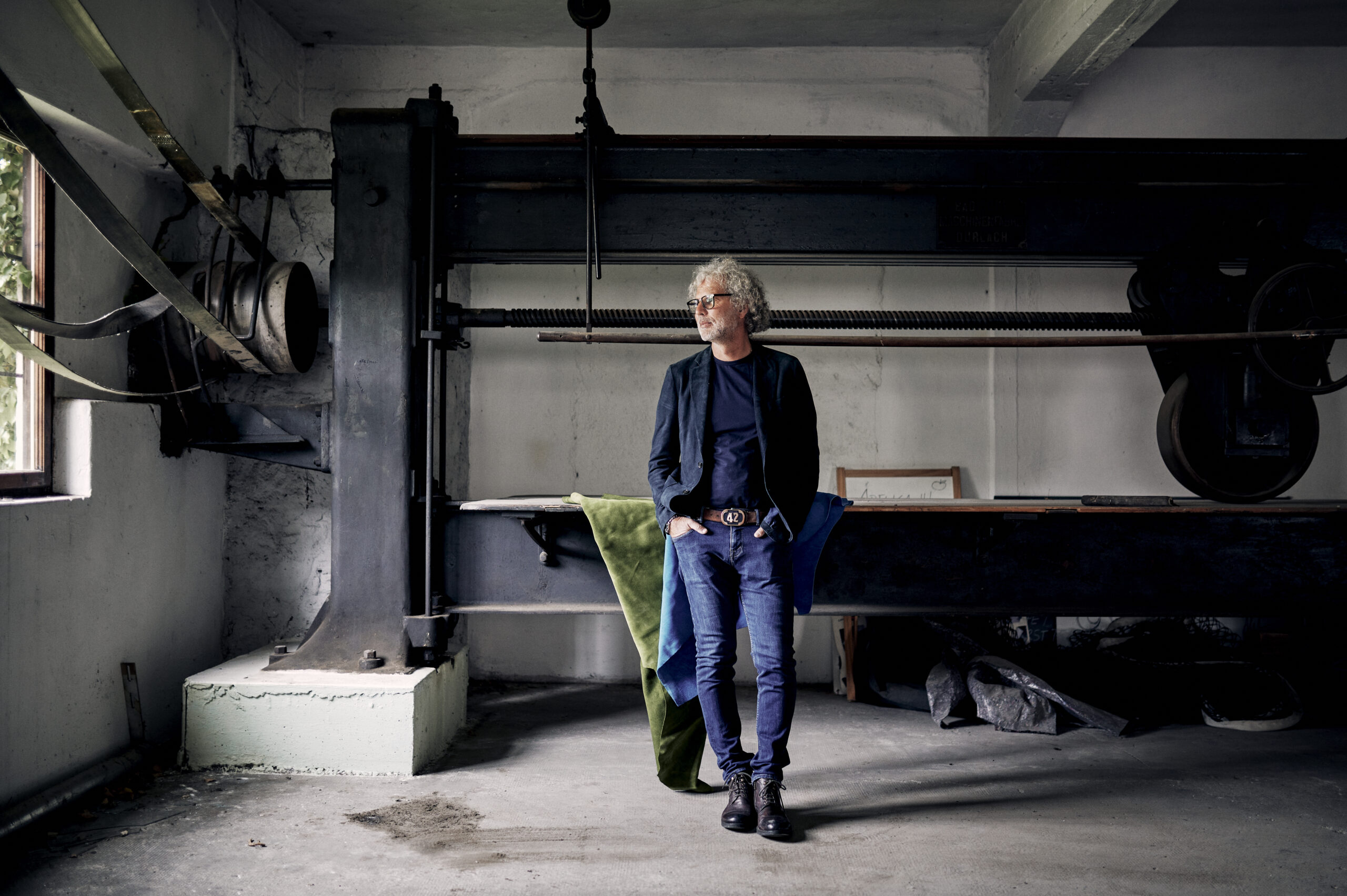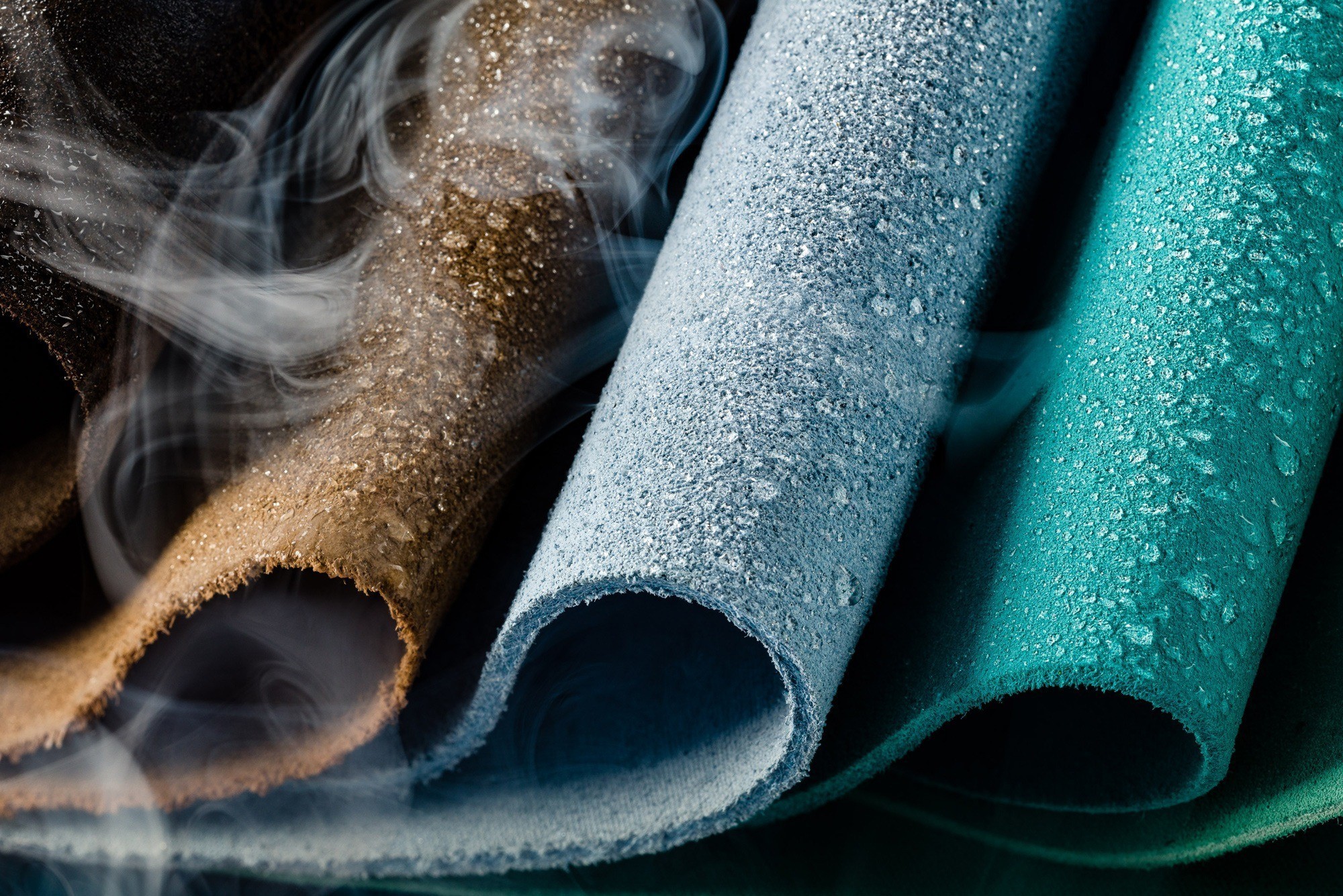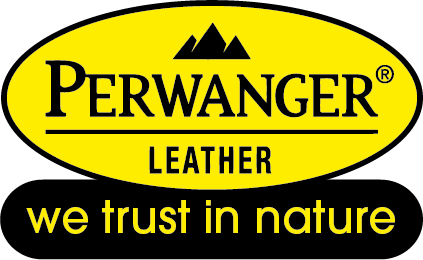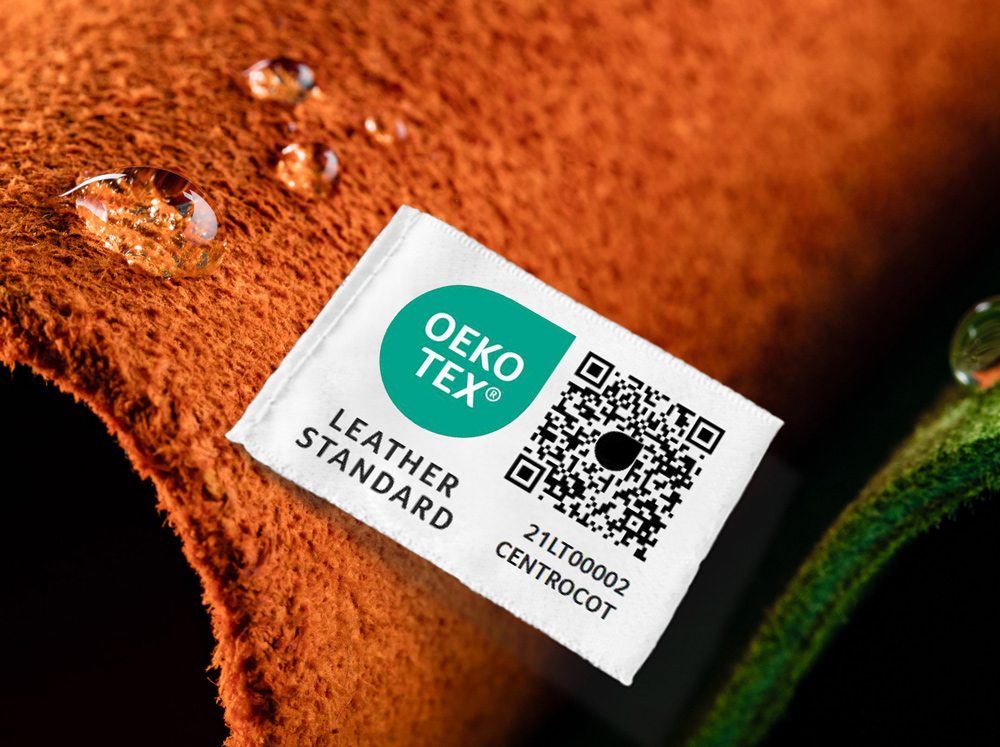The leather industry would like to see a turnaround in the evaluation of outdoor materials

Lorenz Perwanger at the tannery’s old headquarters in Auer, South Tyrol, Italy: “With our leather, we help to ensure that plastics are not carried into our forests and mountains.”
- redaktion
- 24/08/2022
The global leather industry gives impetus to the UN climate summit – Lorenz Perwanger (Perwanger Tannery, Arzignano Italy) explains the background to us
Ahead of the UN Climate Change Conference (COP26) in Glasgow, leaders of the international leather industry have signed a Leather Manifesto calling on decision-makers to now officially prioritise natural fibres such as leather, cotton and wool over synthetic fossil fuel-based materials.
Datered by current considerations on the sustainability of natural and man-made materials in the ‘cradle-to-grave’ cycle, i.e. over the entire life of a product from manufacture to destruction, and the respective potential for reducing the environmental impact of consumer goods.
The Perwanger tannery welcomes the leather manifesto. Lorenz Perwanger, nature lover and owner of the family business, explains the reasons to us: The Perwanger tannery is dedicated to producing high-quality, extremely robust special leathers for hiking, forestry and work shoes. As a global supplier for shoes of leading outdoor brands, the traditional South Tyrolean tannery Perwanger has felt connected to nature for more than 200 years. And today, too, there is a focus on the protection of the native Alpine region, traditional craftsmanship and a holistic view of nature.
Mr. Perwanger, what does the Leather Manifesto want and what does it demand?
Nature lovers in particular also want to preserve and protect nature with their purchasing decisions for outdoor products, clothing, equipment and footwear for hunting, forestry work, alpine sports or hiking. This long overdue manifesto calls for nothing less than a rethink in the assessment of the environmental impact of synthetic materials compared to natural leather.
In recent years, leather products have been accused in the media of being harmful and not environmentally friendly in terms of animal welfare and due to water-intensive tanning. Reports on leather production under irresponsible working and environmental conditions in Asia have also brought European leather manufacturers into disrepute and subsequently led to a boom in synthetic materials among outdoor outfitters.
With its manifesto, the association of the international leather industry now wants to stop this trend and have the environmental and climate impacts of the raw materials for outdoor products re-examined and corrected.
In fact, what has been neglected in previous considerations is above all the view of the entire product life cycle – from the production of the material to the incineration of the end product as waste. Synthetic materials are produced with considerable energy and resource consumption. Most chemically produced fibres are also made from fossil fuels, put simply: using petroleum. How damaging this is to the climate should be obvious to us by now.
Mr Perwanger, let’s take a look at possible pollutants for nature and for the skin.
The Manifesto wants to point out that due to a preference for synthetics over leather, a lot of damage is done to the environment.
Not only the worrying CO2 footprint in manufacturing, but also the environmental impact that is created during the use of synthetic materials can now hardly be overlooked: To make synthetic materials as comfortable, waterproof and breathable as leather, they are often treated with PFC (per- and polyfluorinated chemicals). The harmful PFC substances from the abrasion of clothing and shoes are hardly broken down and accumulate in nature. PFC can already be detected everywhere in nature, right up to the loneliest mountain regions and remotest lakes.
Personally, the desire for factual clarification is particularly close to my heart, not only as a manufacturer of leather, but above all as a mountain person and lover of our alpine flora and fauna. In the spirit of the Leather Manifesto, I hope to give impulses for rethinking with my commitment as well.
Let’s also take up the already mentioned accusations regarding animal welfare and water pollution: These refer exclusively to irresponsible leather producers.
The opposite is true for European tanners and for us: with the Perwanger tannery, for example, we have always been committed to a uniquely high leather quality. And this starts with the search for the highest quality raw materials. We have always found what we are looking for on our own doorstep: To this day, we mainly refine hides from cattle from the Alpine region. These mountain cattle are often raised in a natural environment, they spend their summers on alpine pastures, and many of ‘our’ alpine farmers even run organic farms. We have a good reason for our choice. The hides of the robust mountain cattle are thicker and more resistant than those of cattle kept indoors, or worse: from factory farming. Alpine cattle have a wonderful life – out in the mountain nature and in the clear air of the high-altitude meadows.
It is especially important to me to emphasise: Not a single animal has to die for the leather production. The hides come exclusively from cattle from meat and dairy farming. We tanners – here again I can speak for all European tanneries – refine with the hide a part of the animal that would simply be waste without our work. We turn the hides into a ‘natural raw material that can be used and worn in nature for years or decades without causing any harm.
Lorenz Perwanger: For me, these are convincing arguments for leather
- Perwanger leather is a by-product of meat and dairy farming – no animal has to die for Perwanger leather.
- Our leather comes mainly from the Alpine region and partly from near-natural animal husbandry.
- The utilization of the hides supports the farmers in the traditional livestock farming in the Alps.
- Perwanger leather offers unique comfort for the foot.
- Perwanger leather is extremely robust and durable.
- Perwanger leather is free of harmful substances with letter and seal.
Incidentally, Perwanger leather is proven to be 100% free of harmful substances. We recently had this proven again with a study by OEKO-TEX®. Unlike many synthetic materials, nature lovers can be sure that no harmful substances get on their skin or into the environment with Perwanger leather.
Material properties and durability should also be included in the assessment regarding the sustainability of leather?
Incidentally, Perwanger leather is proven to be 100% free of harmful substances. We recently had this proven again with a study by OEKO-TEX®. Unlike many synthetic materials, nature lovers can be sure that no harmful substances get on their skin or into the environment with Perwanger leather.

“With Perwanger leather, we try to preserve the unique properties of natural skin and even surpass them if possible.”
Mr Perwanger, in summary, do you wish manufacturers and consumers would take a new look at leather products?
Of course - I can only wish for that because of the arguments already mentioned for the mountain world, for our environment and for our future. With every purchase, the consumer decides whether synthetics or leather will be carried into our forests and mountains - and which material, synthetic or leather, will become mankind's legacy to nature in the long run. My opinion is quite clear: I would like to see a clear commitment to leather from the consumer and shelves in outdoor stores that are completely free of products made of plastic.
Our materials influence our climate
- The world needs materials that are sustainable, renewable, recyclable, biodegradable and, most importantly, do not contribute to atmospheric carbon pollution.
- Natural fibers such as leather, cotton, wool, mohair, alpaca, silk, hemp and mycelium are part of the biogenic carbon cycle and as such consist of carbon that has been present in the atmosphere for thousands of years.
- These readily available raw materials, when produced ethically, are important substitutes for fossil fuels, reduce the need for their extraction, and retain more carbon in the earth.
- In addition, properly manufactured natural materials biodegrade at the end of their life, limiting their impact and reducing harmful emissions such as microplastic pollution that are often associated with the synthetic materials they replace.
- With specific reference to leather, the leather manufacturing sector recycles an unavoidable waste from the food industry to produce a versatile, durable and unique material that is ideal for the circular economy the world must move towards.
- However, these same materials are often dismissed for lack of understanding of the manufacturing process and its supply chain, or through the application of questionable science in general in the form of incomplete and incomparable or outdated Life Cycle Assessments (LCAs), promoting the commercialization of new, often fossil fuel-based materials that claim an unsubstantiated level of sustainability.
- As some emerging climate science studies such as the GWP* model show, the production and use of biogenic materials does not generally contribute to atmospheric warming, and where it does, the effects are short-lived. This is in contrast to materials produced from fossil fuels, which release carbon that has been trapped in the Earth’s core for millennia and will remain in the environment, contributing to climate change.
Therefore, we, the undersigned organizations, call upon the COP26 Forum to …
… recognize the cyclical, climate-efficient nature of natural fibers and their potential to make a positive contribution to reducing the climate impact of consumer products.
… promote the use of natural fibers wherever possible and avoid fossil fuel-based materials.
… support life cycle assessment methods that accurately consider environmental impacts of fossil fuel-based materials, including end-of-life properties.
… to promote “slow fashion”, durable products and items that can be used many times, repaired and reconditioned, and last for years.
Signatories of the Leather Manifesto
- Asociación Española del Curtido (ACEXPIEL – Spanish Tanners’ Association)
- Associação Portuguesa dos Industriais de Curtumes (APIC – Portugal Tanners’ Association)
- Association of Dutch Hide Traders (V.N.H.)
- Australian Hide Skin and Leather Exporters‘ Association Inc. (AHSLEA)
- Cámara de la Industria de Curtiduría del Estado de Guanajuato – México (CICUR)
- Cámara Nacional de la Industria de Curtiduría – México (CANALCUR)
- Centre for the Brazilian Tanning Industry (CICB)
- Centro Tecnológico das Indústrias do Couro (CTIC – Leather Center in Portugal)
- China Leather Industry Association
- Confederation of National Associations of Tanners and Dressers of the European Community (COTANCE)
- Dutch Association of Leather Chemists & Technicians (NVLST)
- International Council of Hides, Skins and Leather Traders Association (ICHSLTA)
- International Council of Tanners (ICT)
- International Union of Leather Technologists and Chemists Societies (IULTCS)
- Fachverband der Textil–, Bekleidungs–, Schuh– und Lederindustrie – Berufsgruppe Ledererzeugende Industrie (Austrian Association of Textile, Clothing, Shoe and Leather Industry – Leather Producing Industry Group)
- Fédération Française des Cuirs et Peaux (French Hides & Skins Association)
- Fédération Française Tannerie Megisserie (French Tanners Association)
- Leather and Hide Council of America
- Leather Cluster Barcelona
- Leather Naturally
- Leather UK
- Leather Working Group
- One 4 Leather
- Society of Leather Technologists and Chemists
- Sustainable Leather Foundation
- Swedish Tanners Association
- Turkish Leather Industrialists Association (TLIA)
- UNIC Concerie Italiane (Italian Tanneries Association)
- Verband der Deutschen Lederindustrie e.V. (TUV – German Leather Federation)
- Wirtschaftsverband Häute/Leder (WHL – German Hide and Leather Association)
- Zimbabwe Leather Development Council
- You would like to publish this article?
- Do you have any questions or would you like more detailed information?
- Do you have any suggestions for us?
- Please contact us: info@perwangerleather.com


